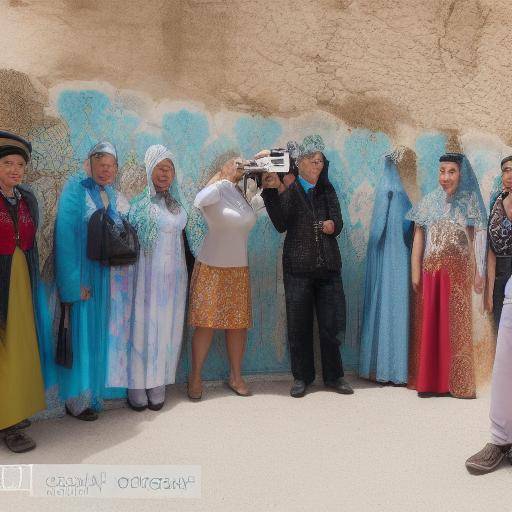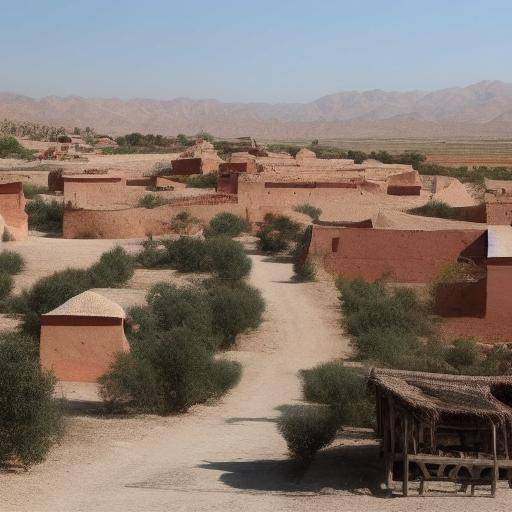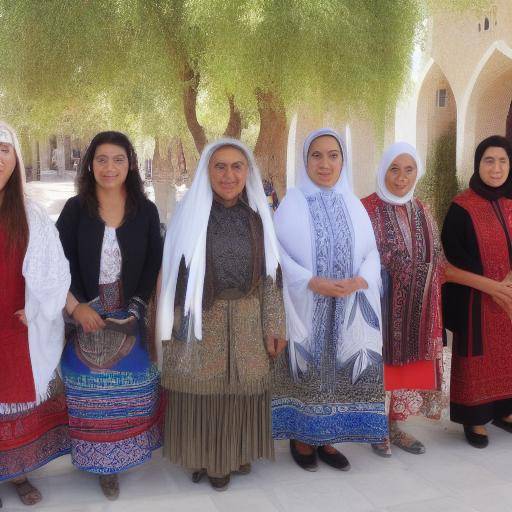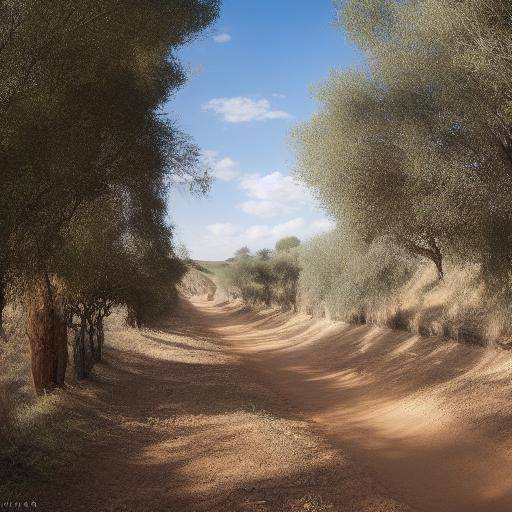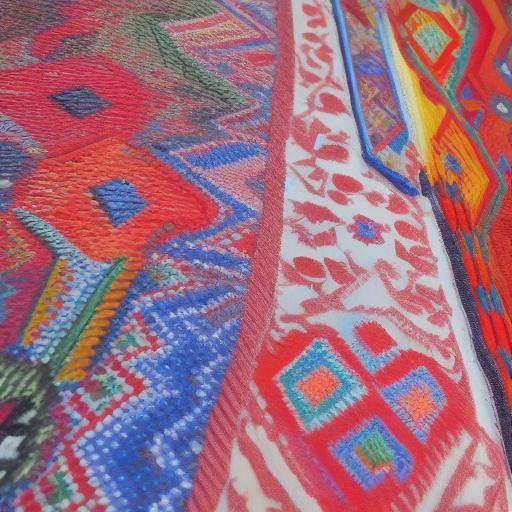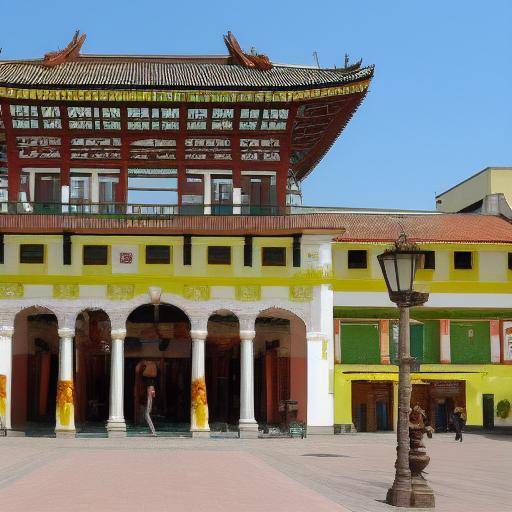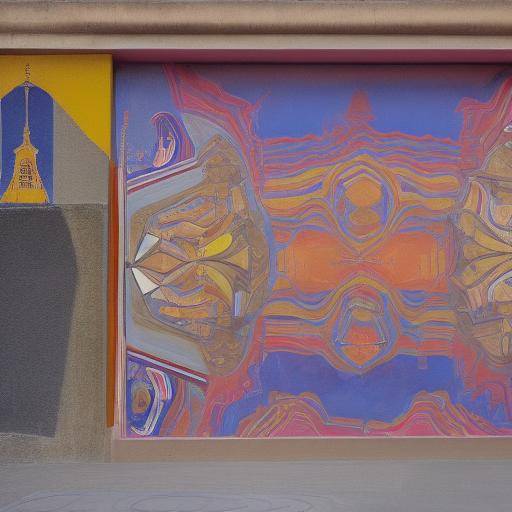
The Silk Road is an ancient network of trade routes connecting the eastern world with the Middle East and Europe. This fabric of trade not only bore silk, but also knowledge, art and culture. In the middle of this route, Samarkand, a legendary city of Uzbekistan, was located. Its history, architecture, ceramics and tapestries reflect the richness of Uzbek art and its influence on the Silk Road.
Introduction
In this article, we will explore the fascinating intersection between art, history and geography along the Silk Road, focusing on the jewel of Uzbekistan, Samarkand. We will discover the unique architecture, the intricate ceramics and the exquisite tapestries that have left an imprint in this ancient city. Join us on this journey to unveil the artistic treasures of the Silk Road in Samarkand.
History and Background
The Silk Road, which spread over 6,000 kilometres, played a crucial role in the cultural exchange between the east and the west. It not only covered trade in goods, but also allowed the dissemination of knowledge and ideas. In its apogee, Samarcanda, with its majestic architecture and lush markets, was a crucial point in this route, being a crucible of cultures and an artistic center. Its blue majolica buildings, the intricate patterns of ceramics and the elaborate tapestries were vivid testimonies of the creativity and ingenuity of Uzbek art.
Deep analysis
The magnificent architecture of Samarkand, such as the iconic Plaza Registán and the Bibi-Khanym Mosque, reflect the influence of various cultures, from Persians to Mongols. Uzbek ceramics, with their vibrant colors and elegant designs, tell stories of ancient traditions and craft skills. The tapestries, with their captivating floral and geometric motifs, reveal the mastery of the weavers and the complex symbolism behind each detail. This detailed analysis allows us to appreciate the uniqueness and beauty of art in Samarcanda.
Comprehensive review
Uzbek art, especially the one found in Samarkand, has left an indelible mark in the history of world art. Its techniques, colors and designs have been valued and sought worldwide. The unique artistic forms and methods of production have influenced artistic movements in the West. In addition, Uzbek crafts have proven to be a fertile field for contemporary innovations and collaborations, offering new perspectives and horizons.
Comparative analysis
When comparing the Silk Road, Samarkand and Uzbek art, it is observed how the interconnection between peoples has influenced aesthetics and creativity. The diffusion of silk and crafts along these routes has resulted in a synthesis of unique artistic forms. While Samarkand has preserved many of his ancestral traditions, he has also adopted influences of distant lands, resulting in incomparable visual wealth.
Practical Tips and Accessible Tips
If you ever have the opportunity to travel to Samarkand, do not forget to visit the Plaza Registán and the Bibi-Khanym Mosque to marvel at the architecture. In addition, explore the ceramic workshops to personally appreciate the meticulousness and art behind each piece. Entering the world of tapestries is a unique opportunity to appreciate the skill of the weavers and the beauty of their creations.
View of Industry and Expert Reviews
Experts in the field of art recognize the importance of preserving the ancient Uzbek artisan techniques. Through the promotion and support of local artists, these forms of art are expected to expire and continue to enrich global culture.
Case Studies and Real Life Applications
Uzbek tapestries, for example, are not only stunning artworks, but also find applications in fashion and interior decoration. The use of Uzbek motifs and patterns in contemporary fashion shows how these traditional art forms remain relevant and appreciated today.
Future Trends and Predictions
As the world opens to cultural diversity, Uzbek art, including Samarkand crafts, is expected to gain greater recognition and appreciation. Trends of sustainability and appreciation for traditional crafts could boost a rebirth in the demand for these unique forms of art.
Conclusion
In short, the art on the Silk Road in Samarkand is a living testimony of the cultural and artistic wealth that has evolved over the centuries. Monuments, ceramics and tapestries attest to the mastery and ingenuity of Uzbek artists, and their legacy continues to inspire present and future generations.
There is no doubt that Uzbek art, in its variety and singularity, deserves to be appreciated and preserved. Through this brief journey through the Silk Road in Samarkand, we hope to have aroused your interest and admiration for this wonderful artistic expression.
Frequently asked questions
1. Why is Samarkand known in the history of the Silk Road?
Samarcanda was an important centre on the Silk Road due to its strategic geographical position and rich history as a meeting point for different cultures.
2. What is the importance of Uzbek ceramics in art?
Uzbek ceramics are highly appreciated for their intricate designs, vibrant colors and their role in preserving traditional traditions.
3. How did the Silk Road influence Uzbek art?
The Silk Road facilitated the exchange of techniques, styles and materials, which enriched Uzbek art and made it adopt influences from multiple cultures.
4. Where can I find more information about art on the Silk Road?
You can find more information in museums specializing in Uzbek art, or through publications and websites that focus on the history of the Silk Road.
5. What are the most emblematic tapestries in Samarcanda?
The tapestries of Samarcanda are distinguished by their floral and geometric patterns, made with exceptional skill and dedication.
6. How can I contribute to the preservation of Uzbek art?
Supporting local artists and craftsmen, as well as spreading knowledge about Uzbek art through appreciation and learning, are effective ways of contributing to their preservation.
Concluding, art on the Silk Road in Samarkand is a wonder that deserves to be explored and appreciated. Through its architecture, ceramics and tapestries, an artistic legacy is revealed that continues to captivate those who have the privilege of contemplating it.
We hope that this article has aroused its interest in this fascinating intersection between art, history and cultures, and inspired it to get even deeper into the wonderful world of art on the Silk Road in Samarkand.


